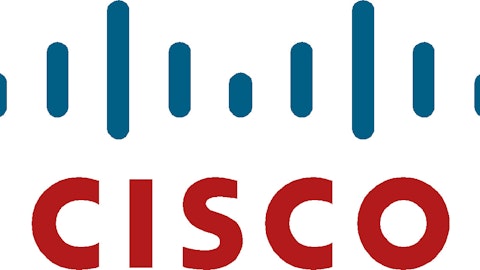An improving economy is good for most stores, but not dollar stores. The deep-discount chains reaped enormous profits during the financial crisis and ensuing recession because of falling incomes and high unemployment. However, as the economy improves — and as competition from Wal-Mart Stores, Inc. (NYSE:WMT) and other stores emerges — profits will be harder to come by for this recession-resistant group.
Given the tougher road ahead, now is a good time for dollar-store giants Family Dollar Stores, Inc. (NYSE:FDO) and Dollar General Corp. (NYSE:DG) to combine strengths in a merger of equals. But, even if this game-changing combination does not take place, both companies have a bright future.

A natural fit
The two businesses are a natural fit. Family Dollar Stores, Inc. (NYSE:FDO) is concentrated in urban areas, while Dollar General Corp. (NYSE:DG) has more locations in rural areas — meaning a combination would not require a massive closure of competing stores.
In addition, the combined company would become the largest dollar-store concept in the United States; it would have over 18,000 locations — far more than Wal-Mart Stores, Inc. (NYSE:WMT)’s 286 Neighborhood Market stores. The combined purchasing power and cost synergies would widen margins and allow the stores to compete for a larger share of low-income consumers’ spending — even competing with Wal-Mart Supercenters.
Although the combination would eliminate redundant costs, the real value in a merger would come from lower competition in the companies’ westward expansion. Both companies are expanding westward at a feverish pace, with each planning to open more than 500 stores in 2013 (Family Dollar has 7,700 locations, and Dollar General has 10,500). A merger would slow the pace of expansion to a more cautious rate, as it will no longer be necessary to reach a market before a major competitor locates there.
Meanwhile, both companies are changing their merchandising strategy to include more traditional grocery offerings, including lower-margin products like produce, meat, and cigarettes. Although this change is squeezing margins, it’s also enabling the companies to capture a larger portion of their target customers’ spending. According to a recent investor presentation, Family Dollar Stores, Inc. (NYSE:FDO) increased the amount each customer spends at its stores by over 30% from 2007 to 2012.
An enticing merger
Family Dollar Stores, Inc. (NYSE:FDO) and Dollar General Corp. (NYSE:DG) are pursuing similar strategies that also compliment one another. The only major external threat to their continued success — aside from a booming economy — is competition from drugstores (such as Walgreen and CVS) and traditional retailers (such as Wal-Mart).
If the two companies merge, they could slow down expansion, conserve cash, and focus on increasing same-store foot traffic to take a greater share of consumer spending from companies like Wal-Mart.
However, even if the two companies decide to continue competing with each other, their cause is not lost. Wal-Mart plans to open only 500 Neighborhood Market stores between 2013 and 2016– a large percentage increase from its current size of fewer than 300 stores, but hardly a formidable competitor to the established dollar-store chains. Moreover, Wal-Mart’s deep-discount concept has been around for quite some time — since 1998 — and has yet to make a serious dent in Family Dollar Stores, Inc. (NYSE:FDO) and Dollar General Corp. (NYSE:DG)’s profitability.
However, like Family Dollar and Dollar General Corp. (NYSE:DG), Wal-Mart’s concept uses food as the primary driver of traffic; it offers a full line of groceries. The target demographic makes twice as many trips to the store for food than the next-closest category (household items), making a wide selection of deeply discounted food the most important feature of these stores.
If Wal-Mart leverages its corporate buying power to lower its cost of food, there is little reason to believe it cannot compete with the traditional dollar stores in many of its markets.
Bottom line
Wal-Mart’s Neighborhood Market concept is so far behind Family Dollar and Dollar General that it will never equal either company in scale; in addition to a huge lead in store count, the latter two companies are opening far more stores than Wal-Mart each year.
However, as the companies expand westward at a rapid pace, they risk expanding too quickly and saturating the new markets. A combination of the two companies would slow expansion and allow management to focus on responsible growth without worry that a major competitor will reach a new market beforehand.
Even so, both companies have a long runway for growth, and shareholders of either company will be rewarded in the long run — even if a merger never takes place.
The article Would These 2 Companies Benefit From a Merger? originally appeared on Fool.com and is written by Ted Cooper.
Ted Cooper has no position in any stocks mentioned. The Motley Fool has no position in any of the stocks mentioned.
Copyright © 1995 – 2013 The Motley Fool, LLC. All rights reserved. The Motley Fool has a disclosure policy.




